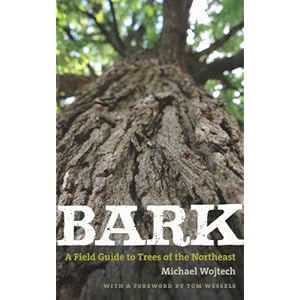Can I just say... I love trees! I love to take pictures of them, try to identify them, touch them, sit under them. Trees just make me happy! So, it is no wonder I was eagerly anticipating this month's Outdoor Hour Challenge.
How did we focus on trees this month?
- We used Tree Study Grid from the October Newsletter to focus on specific aspects of trees we were looking at.
- We kept a list of the trees we identified.
- We went on a hike to find a specific kind of tree. Read about that in my post about Great Pond.
- We went looking for a couple of state and national champion trees. Read about that in my post about Large Trees.
- We looked up information on what trees were the oldest, tallest, heaviest, and had the largest trunk circumference and added that information to our nature notebooks.
- We did artistic activities related to trees. We made a leaf "rainbow" by skewering different colored leaves on a stick. We also did leaf rubbings in our nature notebooks and identified the trees the leaves were from.
 |
| B's leaf rainbow. |
In identifying trees, I found that the trees like oak, maple, and birch, which I would expect to be the easiest to identify, were the hardest. I think I expect them to be easy because they are common, but there seem to be many that are similar. This is especially true when all you have to go on is the bark.
Trees identified and comments:
Common Witch-hazel - unusual in that it flowers at this time of year
Eastern Sycamore - love the mottles bark on the upper trunk and branches
Sassafras - three different kind of leaves on the same tree - "live long and prosper", mitten, single lobe
Cottonwood - very large shiny buds, cotton fluff everywhere when the seed capsules split open
Tuliptree - interesting, distinctive leaf and beautiful flower
Big-tooth Aspen - the name says it all, aspen leaf with large teeth
Quaking Aspen - always thought of this as a western tree
Black Birch - aka sweet birch, wintergreen smell
Paper Birch - white, peeling bark
Yellow Birch - wintergreen smell
White Oak - leaves have rounded lobes
Chestnut Oak - part of white oak family, lobes rounded, but not deeply cut
Black Oak - leaves have pointed lobes
Scarlet Oak - part of black oak family, but with more deeply cut leaves
American Chestnut - almost entirely wiped out by blight, shoots grow to several feet before dying back
Shagbark Hickory - fabulous shaggy bark that looks like it is about to come off tree
American Beech - beautiful smooth grey bark
Striped Maple - very large leaves and green striped bark
Red Maple - beautiful fall color
Silver Maple - leaves are distinctive, deeply cut
White Pine - needles in bundles of 5
Red Pine - lovely, flaky, red-grey bark, needles long in clusters of two
Pitch Pine - needles in bundles of 3
Eastern Hemlock - short, flat needles, very small cone
Eastern Redcedar - fibrous bark
 |
| Beautiful beech tree. |
This was a fun month of nature study. There were several activities I would have liked to have done that we just didn't get to, so I will save them for a later date.
Favorite tree resources on the web:
Virginia Tech's Tree ID Guide - I especially like their Fact Sheets and their Leaf Key (under tools).
Arbor Day Foundation: What Tree Is That?
Favorite Tree Field Guides:
Bark: A Field Guide to Trees of the Northeast by Michael Wojtech
This is my new favorite field guide, but I need more practice using it.
Peterson Field Guides to Eastern Trees by George A. Petrides
Another book that looks interesting, but that I do not own is Identifying Trees: An All-Season Guide to Eastern North America by Michael D. Williams.
See my disclosure policy on the bar at the top of the page. These books were purchased by me for my own use and I do not receive any compensation for mentioning them or from Amazon if you decide to purchase them.



Love our beech tree photo...looking up at those golden leaves is beautiful!
ReplyDeleteYou have had a full month of tree activity and I am so glad you realize you can revisit trees in the future. Nature study is something that you can continue all through the school years.
Thank you for sharing your entry with the OHC.
Wow! So many trees! We found the Va Tech resource too! Thanks for sharing the Bark field guide. I have a lot to learn in that area!
ReplyDeleteOne thing my nature-loving dad always notices is the size of the acorns. I haven't thought to ask him if he's noticed a difference in number, but when they are very large (like this year), it's suppose to mean a hard winter is coming. He's never been wrong so far!
ReplyDeleteYou live in Virginia. I'm beginning to think that is the place to be for a large variety of tree nature study. I love your tree list, a bit jealous too! =)
ReplyDeleteAlthough I use Viginia Tech's Tree ID, I actually live in CT. New England has quite a bit of variety, too. I never realized how much until I started doing this. For example, I thought Aspen was only a Western tree (I think of Colorado when I think of Aspen).
ReplyDeleteThanks for all the comments!
Sarah
What a wonderful tree focus you've had. I love the idea of visiting the large trees...I need to find out if there are any in my area!
ReplyDelete